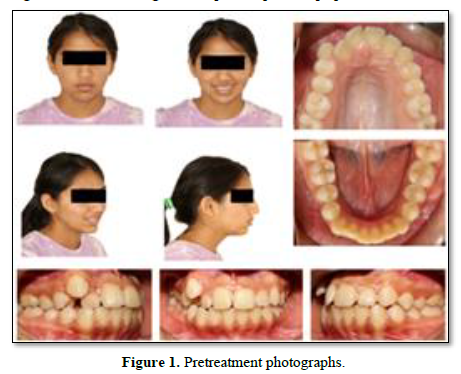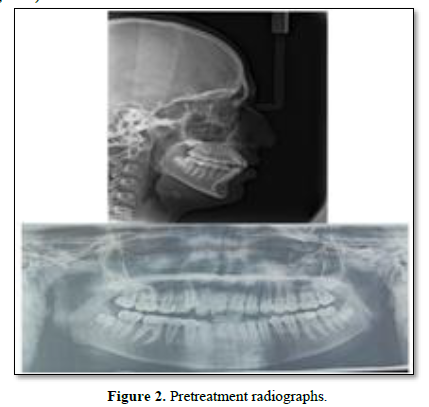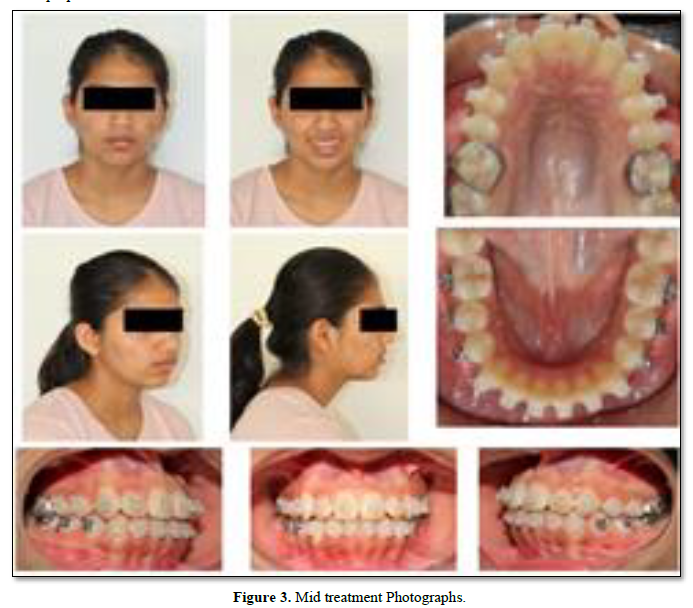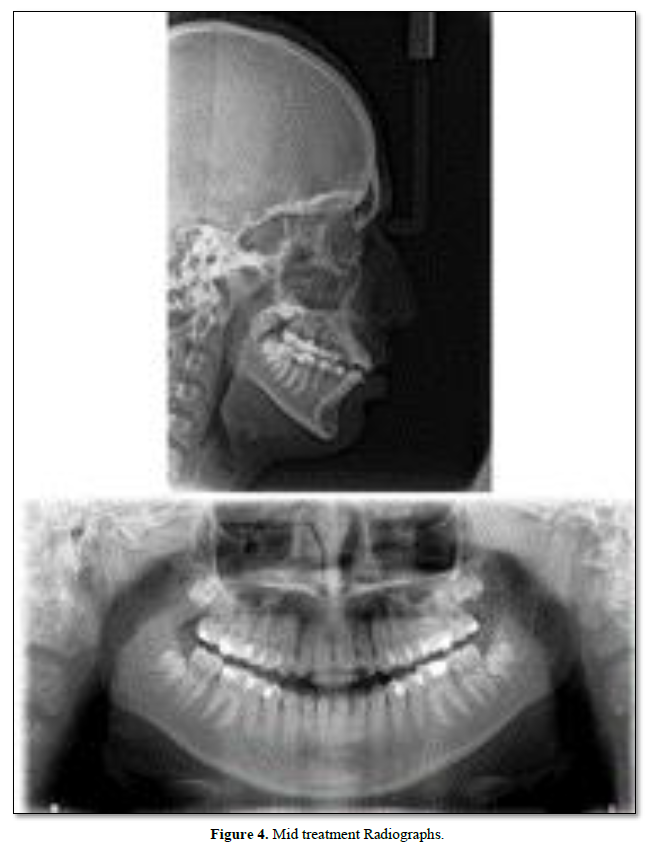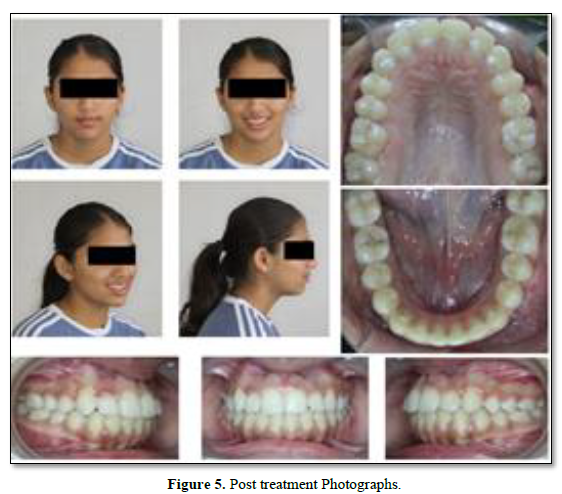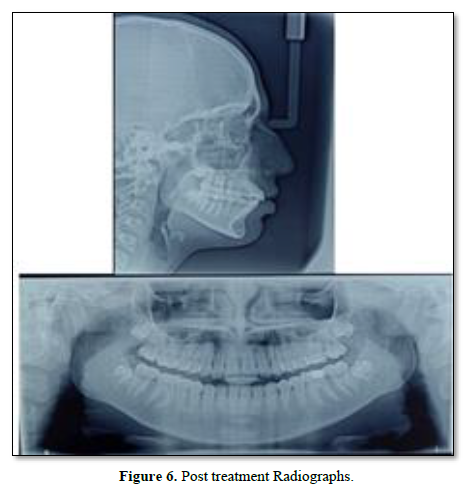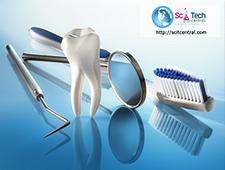476
Views & Citations10
Likes & Shares
Abbreviations: FMA: Frankfort Horizontal Mandibular Plane Angle; SNA: Sella-Nasion, Point A Angle; SNB: Sella- Nasion, Point B Angle; UI-SN: Upper Incisor, Sella-Nasion Plane; IMPA: Incisal Mandibular Plane Angle; NiTi: Nickel Titanium; CuNiTi: Copper, Nitckel, Titanium
In this case report we have used Damon Clear 2 Self ligating brackets to correct the buccally erupted maxillary canine without extraction.
CASE REPORT
A 13-year-old female patient presented with the chief complaint of irregularly placed upper front teeth. No relevant medical and dental history was recorded.
On extraoral examination she exhibited a convex facial profile with a posterior facial divergence with a brachycephalic head shape and leptoprosopic facial form, no gross asymmetry, average nasolabial angle, deep mentolabial sulcus, potentially competent lips (Figure 1). TMJ examination shows no history of tenderness, clicking or crepitus on palpation.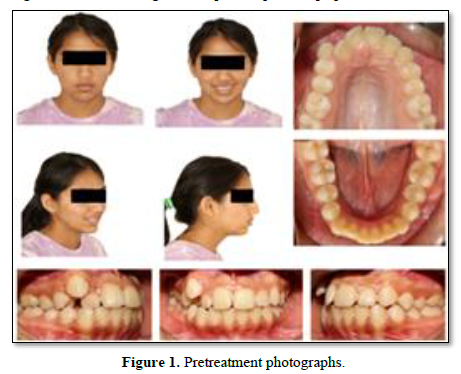
On intraoral examination she had a class I molar relation on both side, Canine relation class I on the left side and not recordable canine relation on right side, lower dental midline shifted 1.5 mm towards left, non-consonant smile with 60% incisal display, overbite of 1mm, overjet of 2mm. Ovoid upper and lower arch forms with buccally placed 13, mild crowding in lower anteriors, mesiolabial rotation of 11, crossbite with 12 & 43 (Figure 1).
Cephalometric finding showed skeletal Class I jaw bases with orthognathic maxilla (SNA-83) and mandible (SNB-79), hyperdivergent growth pattern (FMA-32), Proclined maxillary (UI-SN-115) and mandibular incisors (IMPA 104) (Figure 2).
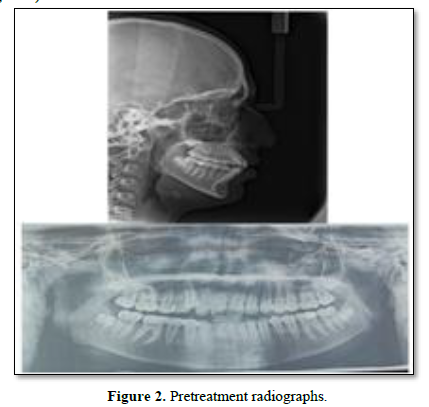
On Model analysis the Arch length perimeter analysis shows a tooth material excess of 8mm in the upper arch and 4 mm tooth material excess in the lower arch.
Problem List
- Crossbite with 12 & 43
- Buccally placed 13
- Crowding in upper and lower arches
- Decreased overbite
Treatment Objective
- Leveling and aligning the teeth in both the arches.
- Crossbite correction
- Correction of buccally placed 13
- Establishing proper overbite and overjet
- Establish proper occlusion
- Achieve esthetic harmonious profile
Treatment Plan
Appliance used: pre-adjusted edgewise appliance with 0.022-inch slot (Damon TM Clear 2) self-ligating bracket prescription.
For the beginning of arch form development and initial leveling, 0.013-inch light round copper NiTi wires were used in both upper and lower arches (4 months) (Figure 3). Further, 0.014 × 0.025-inch copper NiTi, a great transition wire was used (3 months). Later, 0.018 × 0.025-inch copper NiTi wire was used which is an excellent wire to prepare for insertion of the working rectangular stainless-steel transition wire (2 months). For maintaining the integrity of the arch, 0.019 × 0.025-inch SS wires were used during anteroposterior correction and final settling (4 months). Interproximal reduction was carried out in the upper and lower anterior during the working phase to reduce the incisor proclination (Figure 4).
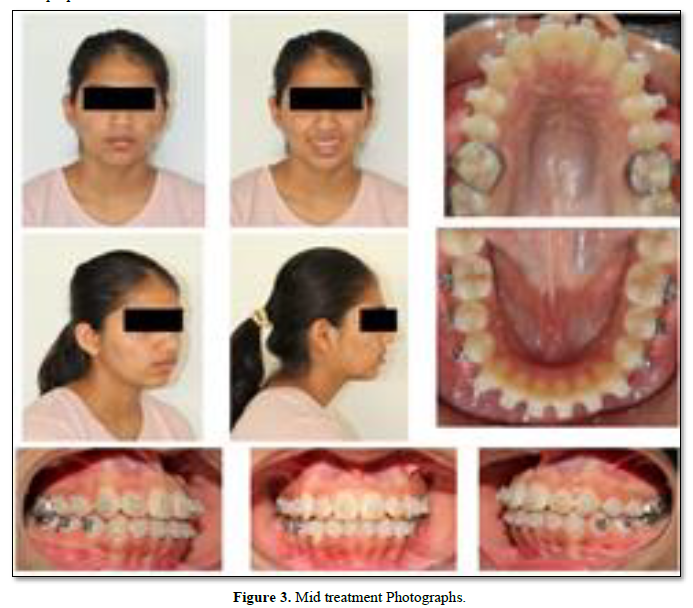
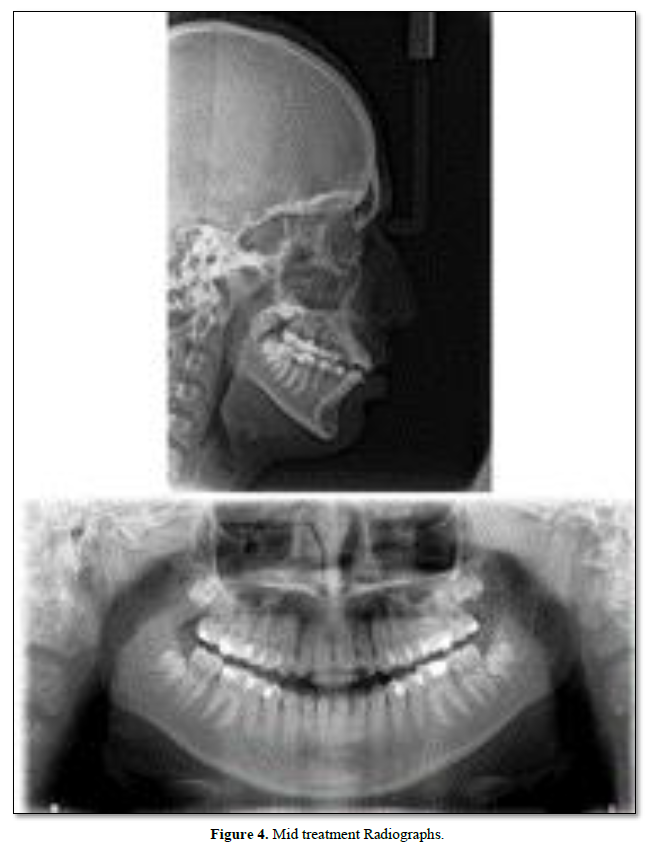
TREATMENT RESULT
In this case, buccally placed maxillary canine was corrected using DAMON™ Clear 2 self-ligating bracket system. Class I molar and canine relationship was achieved with 2 mm of overjet and 2 mm of overbite. The comparative cephalometric evaluation showed that SNA was decreased by 2° and SNB angle was reduced by 1° showing a stable Class I skeletal base (Figure 5). No significant changes were seen in facial divergence. Upper Incisor proclination reduced by 6°, lower incisor proclination reduced by 8°. Favorable esthetic profile was achieved even with the non- extraction treatment modality. (Figure 6, Table 1).
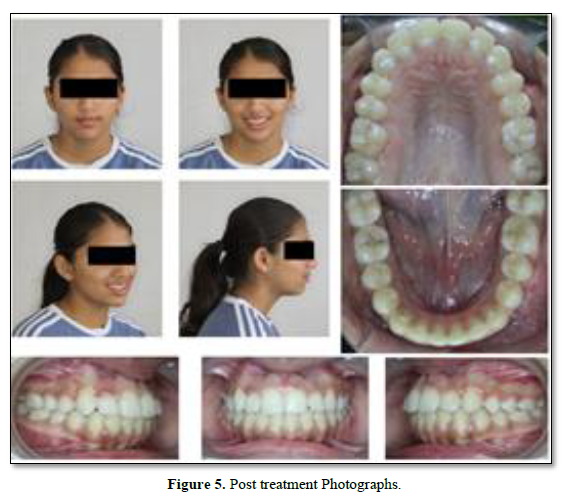
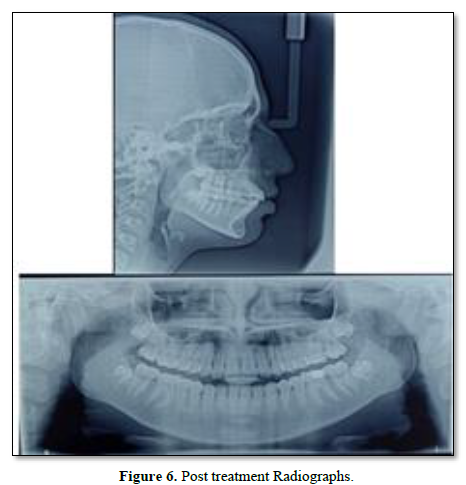
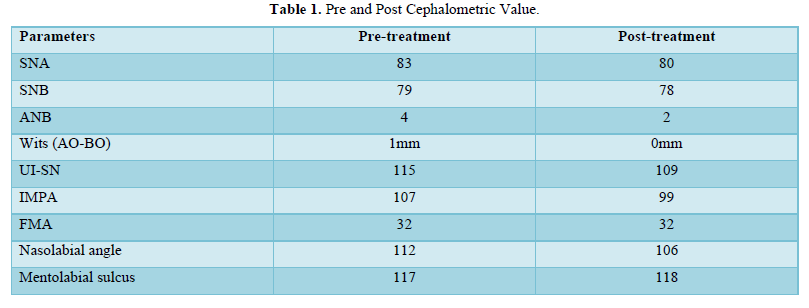
DISCUSSION
Buccally placed maxillary canines are commonly seen in practice. The usual treatment plan suggested for such cases are extraction of premolar in tooth material excess. But the patient insisted on a non-extraction approach due to which Damon self-ligating bracket was used to utilize its property of arch development. The space for a buccally placed canine can be obtained by expansion of maxillary arch, proclination of incisors or extraction of premolars [1].
Compared with conventional pre-adjusted edgewise appliances, it is suggested that the use of passive self-ligation results in a significant reduction in the need for extractions to facilitate orthodontic mechanics because alignment is not hindered by frictional resistance from ligatures and can therefore largely be achieved with small diameter copper nickel titanium arch wires [5]. Damon system creates natural strength systems compatible with normal growth and development in every phase of treatment. Damon believes that posterior expansion causes the tongue to be positioned above and further back, allowing a new balance with the cheeks and lips. This expansion causes an increase in arch length. Damon thinks that during the development of this new balance, the teeth will expand physically. While the mechanics of the Damon bracket system enable expansion, this new balance also provides the stability of the expansive arch [6]. In our cases, this expansive effect of the Damon system was used to gain space. In the Damon system, the treatment time is shorter than the traditional treatment method, and fewer appointments are required during the treatment. Our case was completed in a span of 1.1 year with good occlusion achieved. The final results showed an esthetically favorable profile.
CONCLUSION
Damon self-ligating brackets can be taken as a valuable type of bracket system to achieve a good treatment outcome for non-extraction treatment plan. In our case we have achieved a good occlusion with favorable esthetic profile and patient satisfaction. For ectopic eruptions and mild to moderate crowding self-ligation brackets can be of choice to preserve all teeth.
- Sachan A, Chaturvedi TP (2012) Orthodontic management of buccally erupted ectopic canine with two case reports. Contemp Clin Dent 3(1): 123.
- Shyamali TR, Doshi J (2018) Correction of Severely Crowded Lower Anterior Teeth Using Self-Ligating Bracket System: A Case Report. Iran J Orthod 13(1): e9472De.
- Lima DV, Freitas KM, De Freitas MR (2020) No extraction Treatment of Severe Crowding with a Self-Ligating Appliance. J Clin Orthod 54(12): 765-762.
- Buyukcavus MH (2021) Non-extraction Orthodontic Treatment with Damon System: Two Case Reports. Black Sea J Health Sci 4(1): 44-47.
- Birnie D (2008) The Damon passive self-ligating appliance system. In: Seminars in Orthodontics. Philadelphia, PA: WB Saunders; Vol: 14; pp: 19-35.
- Damon D (2004) Damon system: the workbook. Orange County, CA, USA.
QUICK LINKS
- SUBMIT MANUSCRIPT
- RECOMMEND THE JOURNAL
-
SUBSCRIBE FOR ALERTS
RELATED JOURNALS
- Archive of Obstetrics Gynecology and Reproductive Medicine (ISSN:2640-2297)
- Journal of Neurosurgery Imaging and Techniques (ISSN:2473-1943)
- Journal of Otolaryngology and Neurotology Research(ISSN:2641-6956)
- Journal of Allergy Research (ISSN:2642-326X)
- Journal of Ageing and Restorative Medicine (ISSN:2637-7403)
- BioMed Research Journal (ISSN:2578-8892)
- Journal of Carcinogenesis and Mutagenesis Research (ISSN: 2643-0541)

